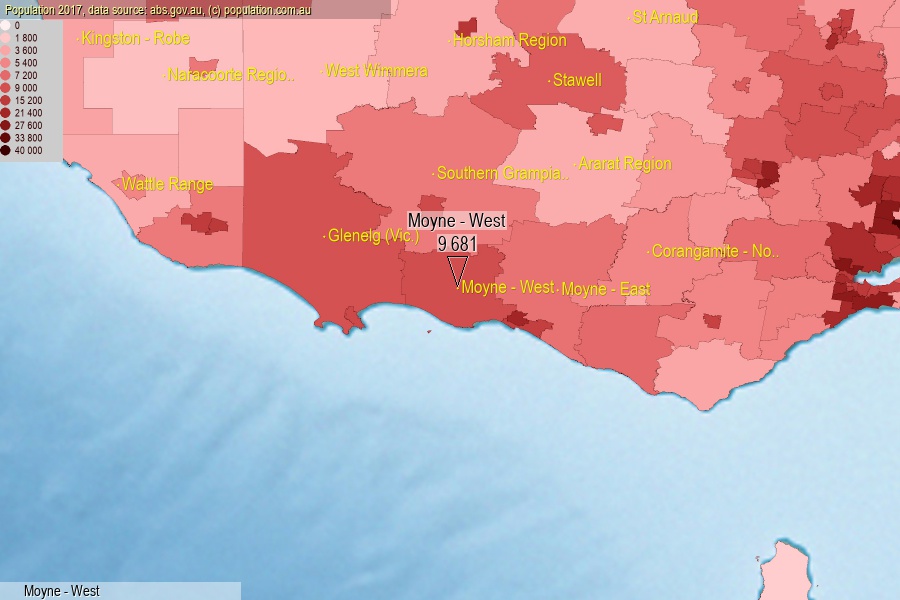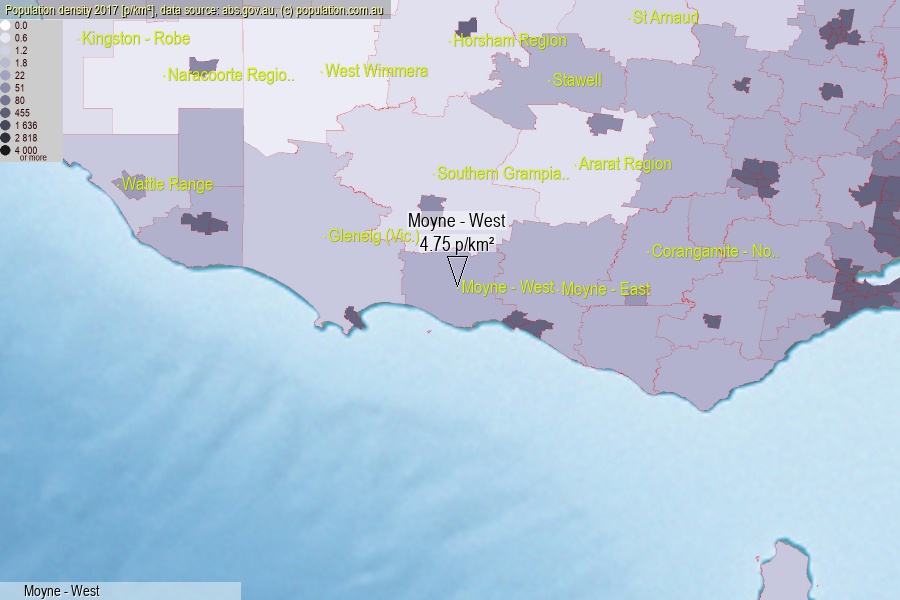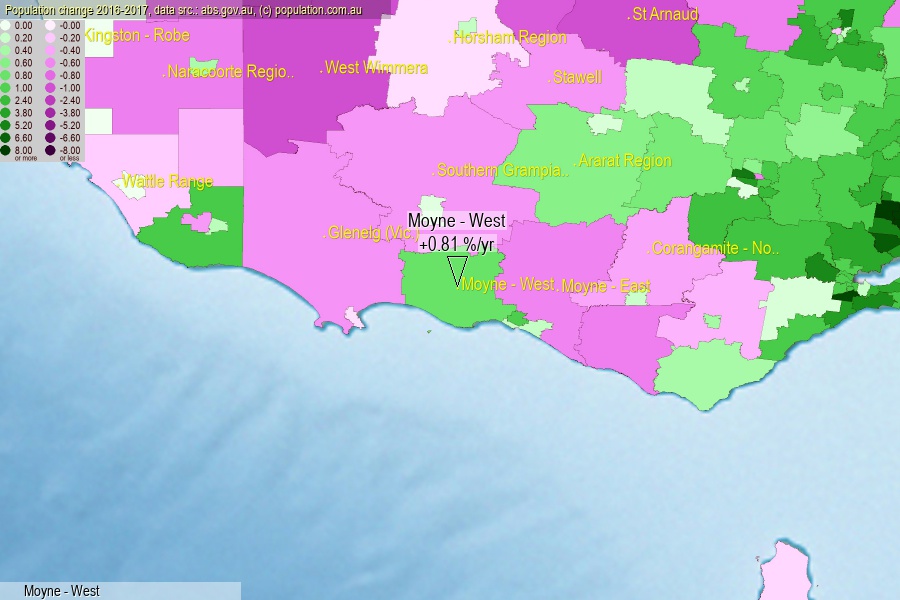 population.com.au
population.com.auLast official estimated population of Moyne - West (as Statistical Area Level 2) was 9 681 people (on 2017-06-30)[2]. This was 0.04% of total Australian population and 0.151% of VIC population. Area of Moyne - West is 2 037.80 km², in this year population density was 4.75 p/km² . If population growth rate would be same as in period 2016-2017 (+0.81%/yr), Moyne - West population in 2025 would be 10 328. [0]



Click to enlarge. Moyne - West is located in the center of the images.
Population [people], population density [p./km²] and population change [%/year] [2]
View borders » (new window) [4]
[2001-2002] +0.84 %/Yr.
[2002-2003] +0.75 %/Yr.
[2003-2004] +0.44 %/Yr.
[2004-2005] +0.35 %/Yr.
[2005-2006] +0.99 %/Yr.
[2006-2007] +1.08 %/Yr.
[2007-2008] +1.13 %/Yr.
[2008-2009] +0.98 %/Yr.
[2009-2010] +0.98 %/Yr.
[2010-2011] +0.66 %/Yr.
[2011-2012] +1.58 %/Yr.
[2012-2013] +1.45 %/Yr.
[2013-2014] +0.89 %/Yr.
[2014-2015] +0.90 %/Yr.
[2015-2016] +1.44 %/Yr.
[2016-2017] +0.81 %/Yr.
[0] Calculated with linear interpolation from officially estimated population
[1] Read more about SA2 and Australian Statistical Geography Standard (ASGS) on abs.gov.au
[2] Population data from Australian Bureau of Statistics (Population and density: 2017; change: 2016-2017)
[3] Digital Boundaries: Australian Statistical Geography Standard (ASGS) 2016.
[4] Border coordinates are simplifyed using Ramer-Douglas-Peucker algorithm.